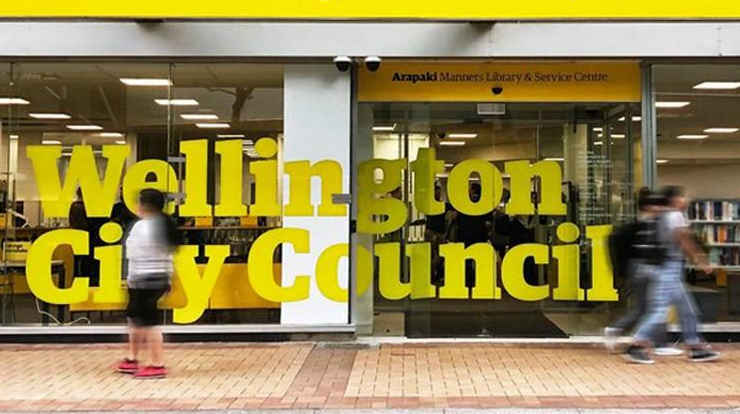(Updated, July 2025)

I’ve seen a number of comments lately that put the blame on Wellington ratepayers for the woeful state of Wellington City Council’s finances. This one, for example:
Decades of avoiding meaningful rates increases has led us to the current situation…
It didn’t quite ring true, so I looked at the numbers. Admittedly I haven’t gone back decades, just 15 years, but $1,000 earning interest at the rate of inflation from 2010 would be worth $1,480 today — an increase of 48%. If your rates bill was $1,000 in 2010, it would be $2,671 today — an increase of 267%.
Here are the numbers…
| Year | Rates Rise | Inflation Rate | Difference | Rates Source |
| 2010 | 2.85% | 2.30% | -0.55% | link |
| 2011 | 3.74% | 4.03% | 0.29% | link |
| 2012 | 3.60% | 1.06% | -2.54% | link |
| 2013 | 2.50% | 1.13% | -1.37% | link |
| 2014 | 2.49% | 1.23% | -1.26% | link |
| 2015 | 3.80% | 0.29% | -3.51% | link |
| 2016 | 3.60% | 0.65% | -2.95% | link |
| 2017 | 3.30% | 1.85% | -1.45% | link |
| 2018 | 3.80% | 1.60% | -2.20% | link |
| 2019 | 3.90% | 1.62% | -2.28% | link |
| 2020 | 5.10% | 1.72% | -3.38% | link |
| 2021 | 13.50% | 3.94% | -9.56% | link |
| 2022 | 8.00% | 7.17% | -0.83% | link |
| 2023 | 12.30% | 5.73% | -6.57% | link |
| 2024 | 18.50% | 2.92% | -15.58% | link |
| 2025 | 12.00% | 2.70%* | -9.30% | link |
* End of June quarter 2025. The annual inflation figures come from here.
So in only one year in the last 15 have WCC rates been less than the annual inflation rate, and then by just 0.29%. Contrast that with last year’s double-digit difference.
I’ve included links to sources of the rates rises because some of the comments and promises are… illuminating. The 2013 rates increase was for a “transformational… action focused plan”. In 2016 the council was planning to “rapidly increase” affordable housing and start work on the strengthening the Town Hall – original budget $43m, now more than $300m. And it’s still not finished. Or how about this assurance from the Long-term Plan 2018-28:
We’ve committed to an average rates increase of 3.8 percent for 2018/19 after growth, and an average of 4.0 percent over the 10 years of the plan.
Seven years into that plan and rates have increased by 77% instead of the projected 28%. And we’ve still got three years to go.
The Compound Interest Effect
When considering rate rises, you’ll hear nonsense such as, “Rates have only risen 84% since 2016.” Technically, that’s true, but only if you add up the percentage rises each year. It’s wildly misleading when you consider the effects of compounding rises, which is to say one year’s rise added into the next.
If I was to ask how long you’d think it would take to double your money at an interest rate of 10% per annum, most people would say ten years, and they would be wrong. In fact, it would take a whisker over seven years because of the compound interest effect.
So let’s take a look at those rates rises since 2016 if your rates were $1,000 in 2015…
| Year | Rates Rise | This Year’s Rates |
| 2016 | 3.60% | $1,036.00 |
| 2017 | 3.30% | $1,070.19 |
| 2018 | 3.80% | $1,110.86 |
| 2019 | 3.90% | $1,154.18 |
| 2020 | 5.10% | $1,213.04 |
| 2021 | 13.50% | $1,376.80 |
| 2022 | 8.00% | $1,486.95 |
| 2023 | 12.30% | $1,669.84 |
| 2024 | 18.50% | $1,978.76 |
| 2025 | 12.00% | $2,216.21 |
The ‘politician’s percentage’ is that rates have only increased by 84% in ten years, but the cumulative effect of those compounding percentages equates to a rates rise of 221%.

Many thanks Geoff for setting the record straight. Good to see a blatant lie crushed by fact.
The misinformation espoused by the Mayor, her acolytes and a gullible local press media have deliberately misled the people of Wellington.
Great article. Can I suggest you also calculate the cumulative numbers – after all, that’s what matters when it comes to the impact on people’s pockets.
Might be a good opportunity to re-publish : analysis like this should be getting more airtime!